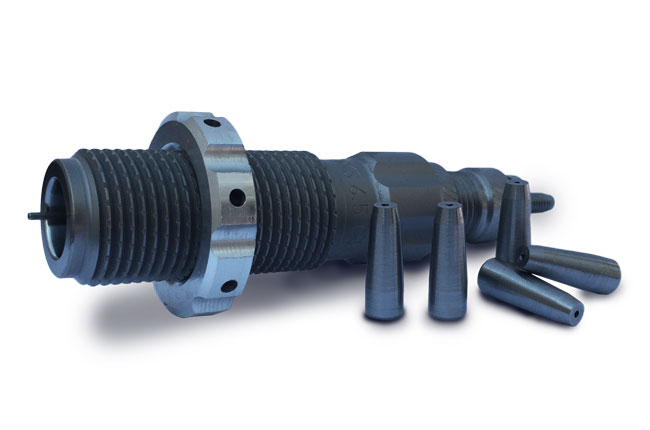Do it again, but this time keep track of what velocity goes with which cartridge case. Punch out the empty primer cups and weigh again. Report the data as a function of primer material, not primer cup + primer material. Did you weigh sort your projectiles? How consistent is your case volume? Finally, what is the precision of the magnetospeed? I mean, is 2760 really 2760, or could it be 2770 or 2750. There's a lot of variables, and primer weight seems to be a really small one. By your own admission "the fit only accounts for 23% of the variability." A better way to say this is that the fit is not supported by the data.
I know this thread is VERY old, but i have finally accumulated enough very light and very heavy primers to rerun my experiment with a wider range of primer weights. Took over a 1000 primers to get this small subset together. CCI450s. It seems CCI does such a good job, i did not have enough variability in my X variable last time to get a good R-square (degree of fit).
This time primer weight varied from 235 milligrams to 247 mg, so 12 mg total range. R-square came out at 62%, which is good.
Conclusions:
1) The effect of primer weight on speed is very real: Primer weight does affect muzzle velocity. Every milligram of additional primer weight adds about 3 fps to MV in my 26” barrel 6.5 Creedmoor. There is some degree of uncertainty in this nr, could be anywhere from 2-4 fps. [Primer Weight is probably not a perfect analogy for the actual amount of explosive material being ignited inside the primer cup, but it is all we can directly measure before firing it. And quite frankly it works well enough. Yes I am confident measuring primers before and after firing and subtracting would have produced a higher R square value. The physics is well understood in this case. The metal components of the primer have very small weight variation - i did check it last time. Most of the weight variation comes from primer material.]
2) However, from a practical point of view, a good batch of primers (like the one i used) often has so little variation in primer weight that the effort of sorting primers by weight does not always provide enough benefit for the amount of effort involved. Amongst 1000 CCI primers i looked at, over several months, maybe a total of 30 were really “too light” or “too heavy”, assuming your goal is to prevent your SD from increasing more than 2.0 fps. You might find 1 or 2 weird primers when loading 50 to 100 rounds. [If you are competing in 1000 yard F-class competitions or the BR group shooting game, then yes it makes sense to weight sort your primers to reduce vertical dispersion, or at least cull out the bad ones, because one bad shot can cost you several points. If you are middle of the pack in a PRS match, i would say no need to do it.]
3) If you manually weigh your primers one at a time (a royal pain in the behind), you can just as well put them into different batches, and shoot one batch at a time. I have done this for the past 1000 rounds. But this is total overkill. But did it help? Yes it helped, but only a little bit: SDs came down from 8-12 range to 6-9 fps. ES came down by about 4-5 fps. Maybe! [If your large batch (strings of 100 rounds plus) SD is below 7 fps you will benefit from weight sorting. A very nice low 5 round SD found during load development is not a reliable indicator of how well your ammo will perform weeks later when ambient is higher, the barrel is more fouled, and the lands have moved forward several thou. Measure a full 50 shot string!]
3) Weight sorting into 1 mg bins is overkill: All you really need to do is cull out the very light or very heavy primers. And they are rare! If primer weight varies by 3-4 mg, the speed impact is too small to bother (9-12 fps total, similar to other effects like neck tension, ogive and bullet weight variations), and not enough to cause problems for say PRS. Yes ES might go from 20 to 30 fps, some of the time, but most of the time it will be an increase from say 20 to maybe 23 fps.
4) If someone far more clever than me could please design a primer sorting machine that works with an FX120, i would buy it! Adam MacDonald, are you receiving?
Below the x-axis shows primer weight in milligram, y-axis is muzzle velocity in feet per second, using CCI450 primers and RL-17 in neck turned annealed weight sorted Lapua brass, weight sorted bullets:
So in short, an “unlucky” primer can move you out of the node (the flat portion of the speed graph). But very heavy/very light primers (way off from the average, by 6-10 mg) are seen fairly rarely. Decide for yourself if it is worth the effort.
IMO if your SD is above 10 fps, i think it is not a good way to spend your time. Rather go figure out your neck tension issues and “re-discover” your node.
Personally, i really hope to avoid weight sorting of primers. I plan to do a quality check on every new batch, so weigh 20 primers from the new batch, and if the ES is below 5 mg, i will not weight sort it. If it is way more, i will try to find better primers. If i cannot get better primers, then yes i will weight sort, and bitch all the time while doing it. There is a friendly local F-class 1000 yard match in Houston, and for that i plan to weight sort.
Hope this is helpful!

 www.whiddengunworks.com
www.whiddengunworks.com


